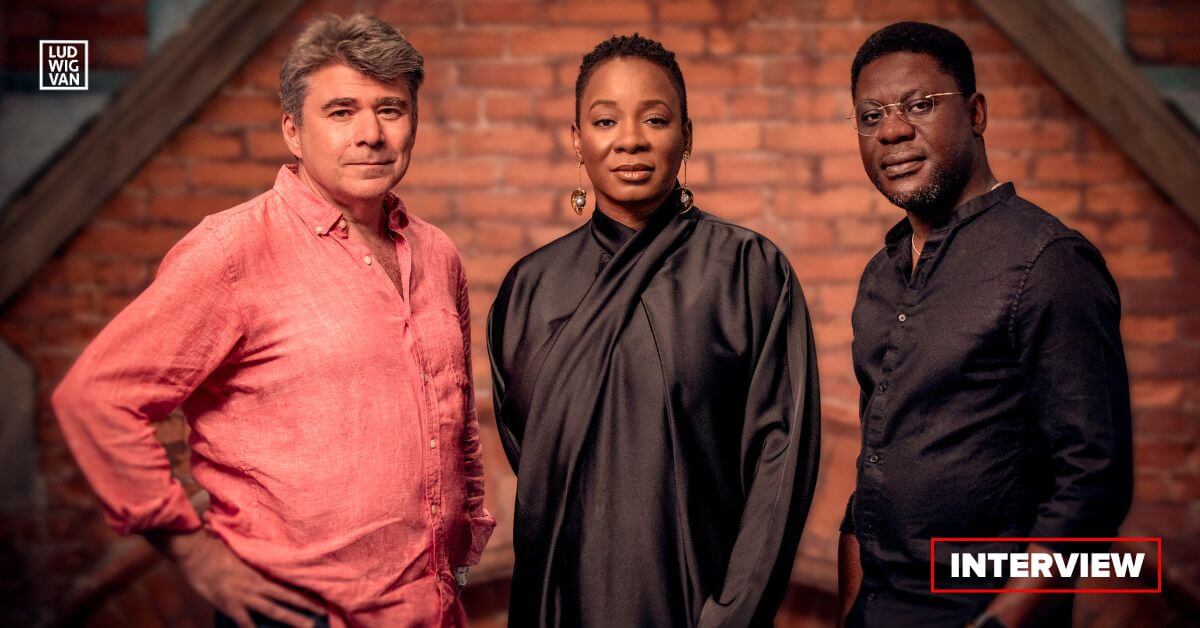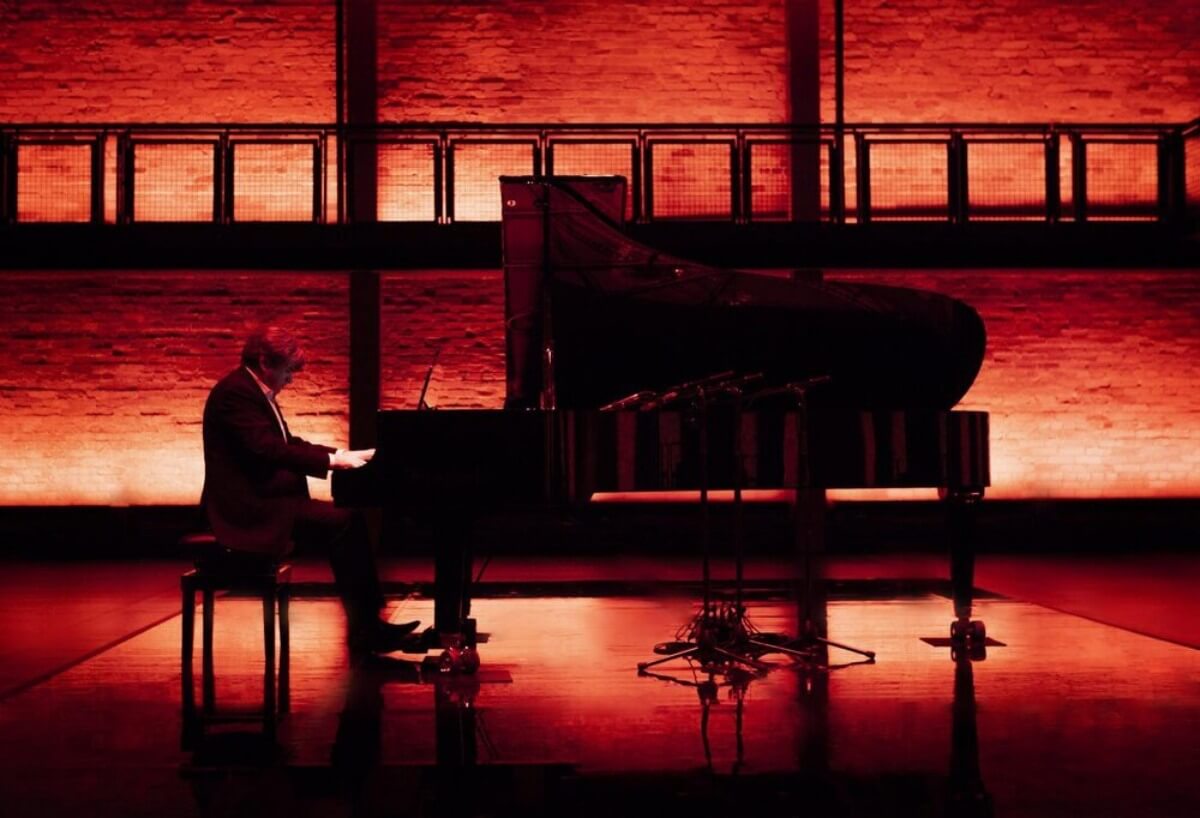
The Art of Time Ensemble concludes its season and program as an organization with a reworking of Stravinsky’s A Soldier’s Tale. In Sankofa: The Soldier’s Tale Retold, the story has been reworked to focus on the experiences of a black Canadian soldier during World War II, using real historical context.
We spoke to AoT’s artistic director, Andrew Burashko, who serves as the production’s musical director.
Andrew Burashko and AoT
Andrew Burashko was born in Moscow into a family of musicians, but began his music studies in earnest in Toronto at the Royal Conservatory of Music. From there he continued studying in Vancouver with Lee Kum-Sing, returning to Toronto to work with Leon Fleischer and then with Bella Davidovich in NYC.
In addition to his career as a soloist and chamber musician, which began with his debut with the Toronto Symphony Orchestra at the age of 17, he worked continuously with the legendary Canadian dancer Peggy Baker for more than two decades.
He founded the Art of Time Ensemble in 1998 with the goal of creating a versatile chamber ensemble that would bring art and pop culture together, blur genres, and attract new audiences to orchestral music. Andrew has worked with conductors Sir Andrew Davis and Marin Alsop, and musicians such as Branford Marsalis and Madeleine Peyroux, as well as a who’s who of Canadian talent.
In May 2023, Burashko announced the program of the 25th anniversary season, along with the culmination of the Art of Time Ensemble itself.

A soldier’s story retold
According to art director Andrew Burashko, it wasn’t necessarily the original intention to end AoT with “Sankofa: The Soldier’s Tale Retold.”
“It was a combination of things,” he explains. “I think it was a happy coincidence. It wasn’t originally supposed to be part of our last and final season.”
It was originally planned for the 2023/24 season, but due to the waiting time for key personnel, the project was planned too late last season.
“We were waiting for the director we had approached,” he explains.
The director in question is a theatre artist from Toronto Tawiah M’Carthya Dora Mavor Moore-nominated actor and playwright who uses both Western and African theatre traditions in his work. His plays often combine dance, music, storytelling and poetry with the structures of theatre. In recent years he has directed acclaimed productions at the Stratford Festival (Death and the King’s Horseman, 2022) and Canadian Stage (Topdog/Underdog, 2023), to name a few.
“I think it’s a good opportunity because it will be great to end it on such a strong note,” he says. “This project embodies everything that Art of Time stands for.”
Stravinsky published his Histoire du soldat, or The Soldier’s Story, in 1918 with the instruction that it was a work to be “read, acted and danced (lue, jouée et dansée)” by three actors. One or more dancers and a septet of musicians, including clarinet, bassoon, cornet, trombone, percussion, violin and double bass, accompany the story. The music is demanding and features, among other things, frequent meter changes.
The original libretto is based on the Russian story of the runaway soldier and the devil, as published in a collection of stories by Alexander Afanasyev.
Join
The project itself will be the happy end of a long process. “It was a combination of many, many things – a confluence,” he says, “coincidences. I have always been deeply fascinated by this piece.”
In addition to the dramatic possibilities, it was Stravinsky’s score that stood out. “I’ve always loved this piece of music in particular,” says Andrew. “For years I wondered how I could do something new and fresh with it.”
He says he discovered Kurt Vonnegut’s version of the story, An American Soldier’s Tale, about ten years ago. Vonnegut was commissioned by the New York Philomusica to write a new libretto for the play in 1993. Vonnegut, a World War II prisoner of war who had witnessed the bombing of Dresden, was concerned that the original made no mention of the horrors of war at all. His libretto is influenced by The Execution of Private Slovik, a nonfiction book by William Bradford.
Burashko was intrigued by the idea of using the same kind of story and the same three actors, but giving them strikingly different roles. In the end, he abandoned the idea of bringing Vonnegut’s version to the stage and decided to develop his own version.
“Fast forward to the summer of 2020, when we were all in lockdown,” says Andrew.
A friend sent him the rapper Shad’s album, A Short Story About a War, around the time the George Floyd story broke. “It touched me deeply,” he said. One of the recurring characters on the album is a black Canadian sniper.
“It made me think: To hell with Kurt Vonnegut. It made me think of a story about a black soldier in a white army.”
Paying homage to the original, the new version uses essentially the same characters: the narrator, the soldier, the devil, and is delivered in rhyming verse. As for the true story behind the revamp, that of the soldiers of Canada’s first black army unit, Construction Battalion No. 2, and their mistreatment at the hands of a racist system, as Burashko notes, Prime Minister Trudeau issued a formal apology to the soldiers and their heirs in 2022.
Once the story’s angle was outlined, the rest of the decisions became clearer. “I knew it had to be a black artist telling this story,” he says. It was Joel Ivany, artistic director of the Edmonton Opera, who brought Titilope Sonuga to his attention.
“I looked into her writing and gave her a chance. It was really worth it.”
Nigerian-Canadian poet, playwright and performer Titilope Sonuga lives in both Edmonton and Lagos, Nigeria. She is the author of three books of poetry, Down to Earth (2011), Abscess (2014) and This Is How We Disappear (2019) and has composed and released two spoken word albums. Sonuga has written three plays and written global advertising campaigns for major brands such as the Bill and Melinda Gates Foundation, Google and Intel Corporation. She is the former Poet Laureate of the City of Edmonton (2021 – 2023) and was a writer and actress on a hit Nigerian television series.
“It’s a great team,” he says. “What I’m incredibly proud of is that the hardest part was connecting it to the original music, which supported a completely different story.” Still, the nature of Stravinsky’s music was a plus. “The immediate impact of the music goes beyond any figurative meaning. That helped a lot.”
After…
What comes next when Sankofa: The Soldier’s Tale Retold ends?
“There is still a lot to do,” he says. “We are putting together an archive for this project.”
There is also another show that brings a tribute to Leonard Cohen to New York City.
“And we’re going to do one more record,” he says. “After that, I honestly have no idea, and that’s an incredibly exciting situation. But I really needed to do this to catch my breath after 26 very productive years,” he adds.
“I was tired of all the work that comes with hosting and producing shows. I wanted more time to dream.”
- For more information on Sankofa: The Soldier’s Tale Retold, visit Harbourfront Centre Theatre (24-27 October), including tickets (HERE).
Would you like a Event? Do you have a News tip? You want to know what is best Events this weekend? Send us a note.

:max_bytes(150000):strip_icc():focal(737x184:739x186)/gavin-rossdale-zuma-082224-tout-4c460a833b114e80ae61c9bafde5531a.jpg)

